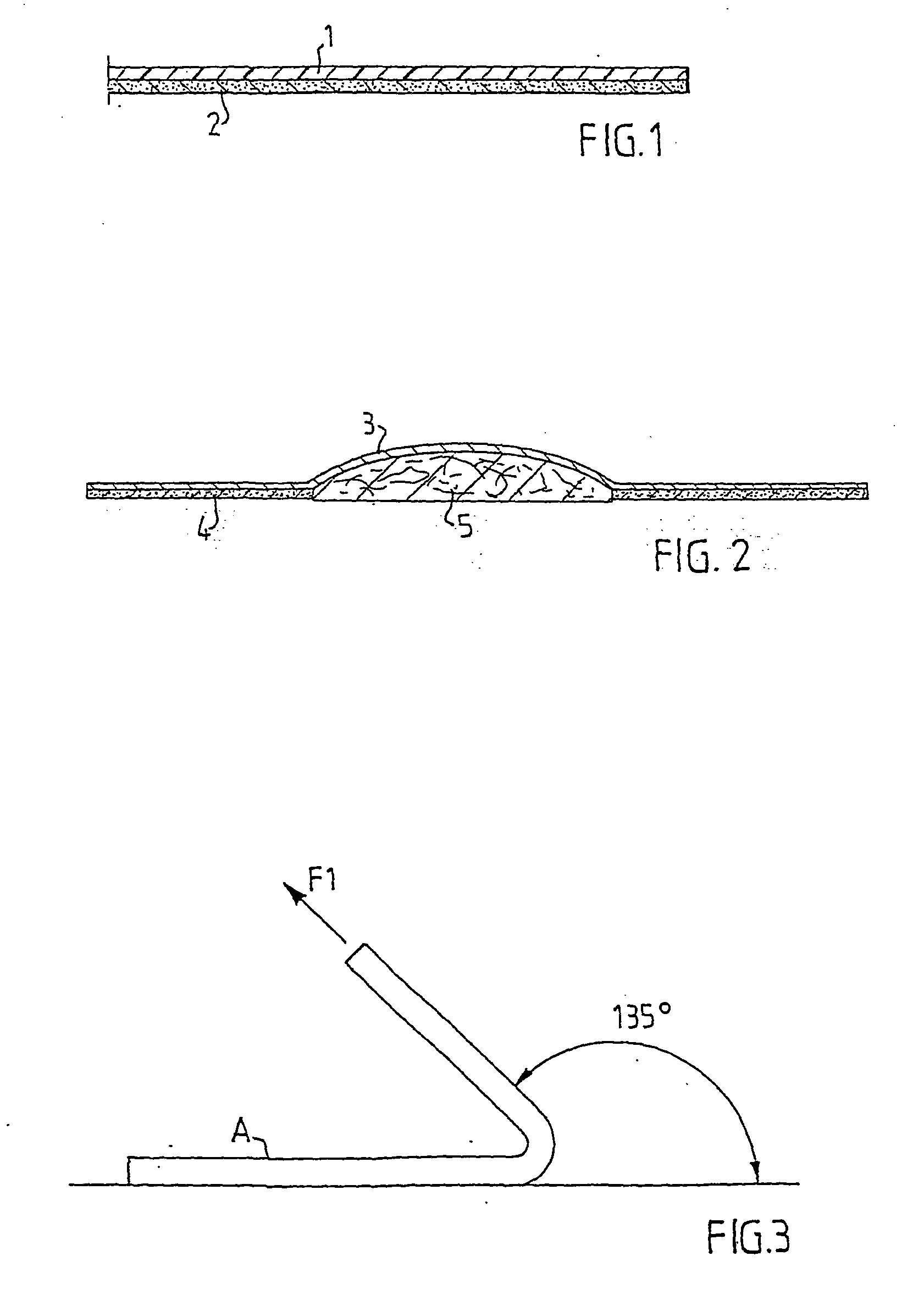Skinfriendly adhesive with ph-lowering substances
a skin-friendly adhesive and ph-lowering technology, applied in the direction of bandages, sanitary towels, colonostomy devices, etc., can solve the problems of frequent greatly impaired skin barrier function, damage to the barrier function of skin surrounding wounds and skin affected by various skin diseases, and use of alkaline and neutral soaps
- Summary
- Abstract
- Description
- Claims
- Application Information
AI Technical Summary
Problems solved by technology
Method used
Image
Examples
second embodiment
[0038] FIG. 2 shows a diagram of a dressing in accordance with the invention. This dressing also comprises a supporting material 3 which is provided, outside of a central region, with an adhesive layer 4 in which is present a substance which, on contact with skin moisture, lowers the pH of the skin to a suitable value if this pH is too high. An absorbent pad 5 is arranged in the central region of the dressing. This pad can consist of a foam pad which, on its surface of contact with a wound, is covered with a thin silicone gel layer which prevents the pad adhering to the surface of the wound. Such a pad is disclosed by U.S. Pat. No. 6,051,747. The supporting materials, adhesives and substances which are suitable for the plaster described in connection with FIG. 1 are also suitable for the dressing described in FIG. 2.
[0039] Adhesive in accordance with the invention can be used on different types of self-adhesive dressings and skin plasters. Examples are self-adhesive plasters having ...
implementation examples
[0041] 1. 40% ammonia was added, while stirring, to an aqueous acrylate adhesive of the dispersion type (RHODOTAC 315, RHODIA Limited, Manchester, UK) until a pH of 5 was reached. After that, sodium carboxymethyl cellulose (CMC: Carboxymethylcellulose Natriumsalz [carboxymethyl cellulose sodium salt], Art. 3333.1, Carl Roth GmbH, Karlsruhe, Germany) was added slowly while stirring vigorously. 1.5 ml of a pH 5.0 buffer consisting of NaH.sub.2PO.sub.4.2H.sub.2O+citric acid (in the ratio by weight of 66.3%:33.7%) were added slowly to 20 g of the dispersion while stirring. While the concentrations of this buffer were different in the different experiments, the weight ratio between NaH.sub.2PO.sub.4.2H.sub.2O and citric acid was constant. The adhesive was streaked out in a thin layer (approx. 40 g / m.sup.2) on a plastic-coated paper and dried at 70.degree. C. 0.1 ml of water was deposited in a drop on the adhesive surface and the pH on the adhesive surface was measured with a flat pH elec...
PUM
| Property | Measurement | Unit |
|---|---|---|
| force | aaaaa | aaaaa |
| pH | aaaaa | aaaaa |
| width | aaaaa | aaaaa |
Abstract
Description
Claims
Application Information
 Login to View More
Login to View More - R&D
- Intellectual Property
- Life Sciences
- Materials
- Tech Scout
- Unparalleled Data Quality
- Higher Quality Content
- 60% Fewer Hallucinations
Browse by: Latest US Patents, China's latest patents, Technical Efficacy Thesaurus, Application Domain, Technology Topic, Popular Technical Reports.
© 2025 PatSnap. All rights reserved.Legal|Privacy policy|Modern Slavery Act Transparency Statement|Sitemap|About US| Contact US: help@patsnap.com

